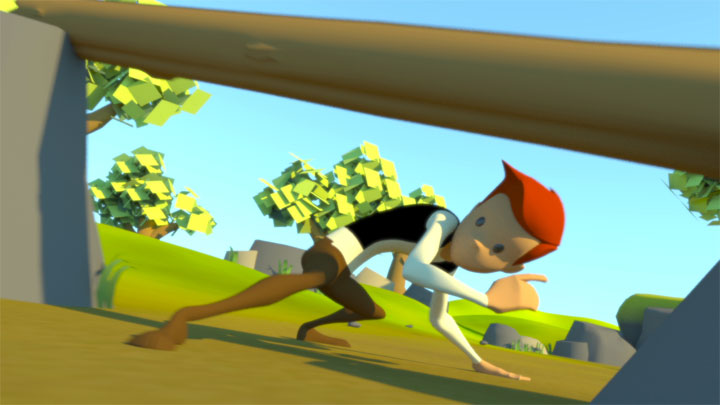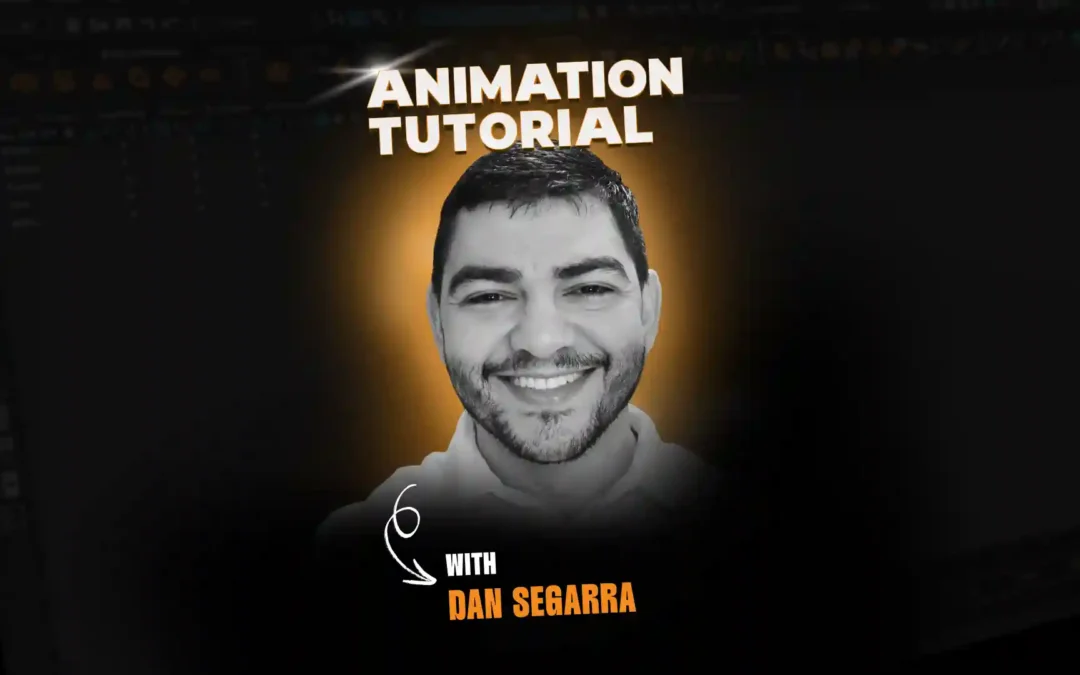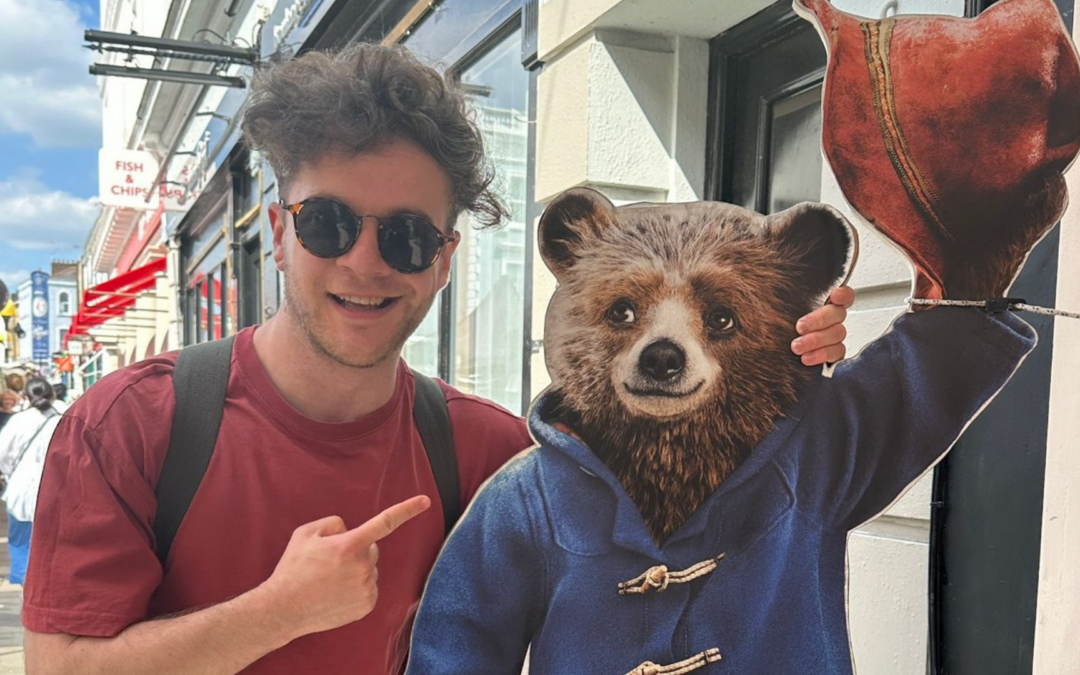We were blown away by the talented students who participated in the 2014 Animation Mentor Student Showcase. Their work shows an incredible amount of talent, creativity, imagination and inspiration. We recently chatted with student and animator Eike Hoppmann about his shot in the Showcase, why he chose to use the Stewart rig, and his process as an animator. Read on to learn more about Eike and Stewart!
– The Animation Mentor Crew
_________________________________
ANIMATION MENTOR: Why did you choose Stewart for this shot?
EIKE HOPPMANN: I chose Stewart because it has all the controls you need to create every body mechanic performance you want. No technical aspect will hold you back and I truly believe that this rig is on the same level as most feature rigs nowadays. He has separate hip controls, FK and IK spline that work simultaneously (same goes for the head and neck), breathing controls (very important!), individual squash and stretch controls for the head, all kind of foot controls, bend geometry controls for the whole body and much more. It was simply the best rig I had ever used.
ANIMATION MENTOR: How did Stewart help sell your story idea?
EIKE HOPPMANN: Stewart is a very ‘neutral’ character, meaning his appearance doesn’t give away a lot of his personality. That helped me in the way that the audience is not already biased by, let’s say, goofy facial features or a striking hairstyle, for example. The character also doesn’t feel disproportionate, an issue I sometimes have with other rigs (enormous heads, long legs, gigantic hands…). I was very happy that I could just change his body texture and get a new character out of it.
ANIMATION MENTOR: What was your favorite part about working with Stewart?
EIKE HOPPMANN: There were a lot of favorite parts, actually! I love that you can switch to a lower res version and ramp up the performance of the playback. Hiding different body parts is also a big plus for me, since I prefer to focus on individual body parts. And it is all very easy to access. What else is great is that you have a seamless IK/FK switch on both hands and legs with just one click. In my shot sequence in particular, I had several moments where I switched back and forth from IK to FK, and the way the rig is set up for it made it very easy to do. It’s on a separate control and the FK/IK snap button automatically sets a keyframe for you. So, I think the quick accessibility is my favorite part.

Eike’s animation shot from the Student Showcase 2014
ANIMATION MENTOR: What was the inspiration for your shot?
EIKE HOPPMANN: The inspiration for the sequence came mainly from seeing an old Han Solo promotional photo. From there, the idea evolved over several days. My classmates also gave very helpful feedback on the whole scenery. Of course it changed over the weeks a bit but I knew what kind of body mechanics I wanted in my reel and so I tried to build a story around those. For example, I wanted to do a weight lift and thought about what the character could try to lift up. Thats where the gatling gun came into my mind and from there it started coming bit by bit. Putting the character in a scenario where he is chased also gives it a much more dramatic feeling which naturally leads to different acting choices and behavior. I also had the goal to animate a character who loses balance and falls, so I created a scenario for that. I think it’s always important to build at least a little story around the motion you want to create. If you start your shot with a character standing next to a grey box, you can animate the best physical weight lift in the world but it would still be a bit boring since you didn’t give him a reason to do it.
My mentor at that time, Drew Adams, was a great help. He could not only pinpoint errors in the motions but also helped me with the whole setup, camera animation and shot continuity.
ANIMATION MENTOR: What was your process for animating this shot?
EIKE HOPPMANN: My workflow consists of heavy planning, like creating thumbnails, looking for reference or just imagining it until I have a clear picture of the motion in my mind. Once that is done, I block out my key poses and breakdowns. I always stay in spline though and just flip through my poses with my hotkey buttons for “next- and previous key”. This is for me the most important stage since at this point everything gets defined, line of action, composition, silhouette, timing, lead and follow etc. Staying in spline from the beginning helps me with my timing and saves me from surprises that you normally get when you switch from stepped to spline. When creating my poses, I make sure I have contrasts in line of actions, opposing hip/shoulder lines and be aware on which foot the character’s weight rests. By the time I’ve created all the poses that are needed to sell the action, I’ll have a full body pose every third or four frames, maybe even every other frame. This is when I convert to stepped and present it to my mentor/supervisor. If it gets approved I will convert to spline again and start keying different body parts on individual frames, working from inwards to outwards (hip -> spine -> head -> arms -> hands -> fingers -> legs ->feet). Once I did this for the whole animation I will again ask my peers for feedback, what feels wrong to them and what areas aren’t working. It’s an important thing you have to do cause after a few days or weeks working on the same ten seconds long animation, you will have lost your fresh eyes. When the spline pass is approved I go into polish, open my graph editor and frame by frame my shot until it’s done.
____________________
Eike Hoppmann is from Germany and graduated from the Classic Animation Track in December 2014. His shot sequence is from Class 3 (Advanced Body Mechanics) where he was mentored by Drew Adams (Dreamworks Animation). Learn more about Eike and his animation on his website, www.eikehoppmann.com.
Love Eike’s shot? You can animate with Stewart too!



